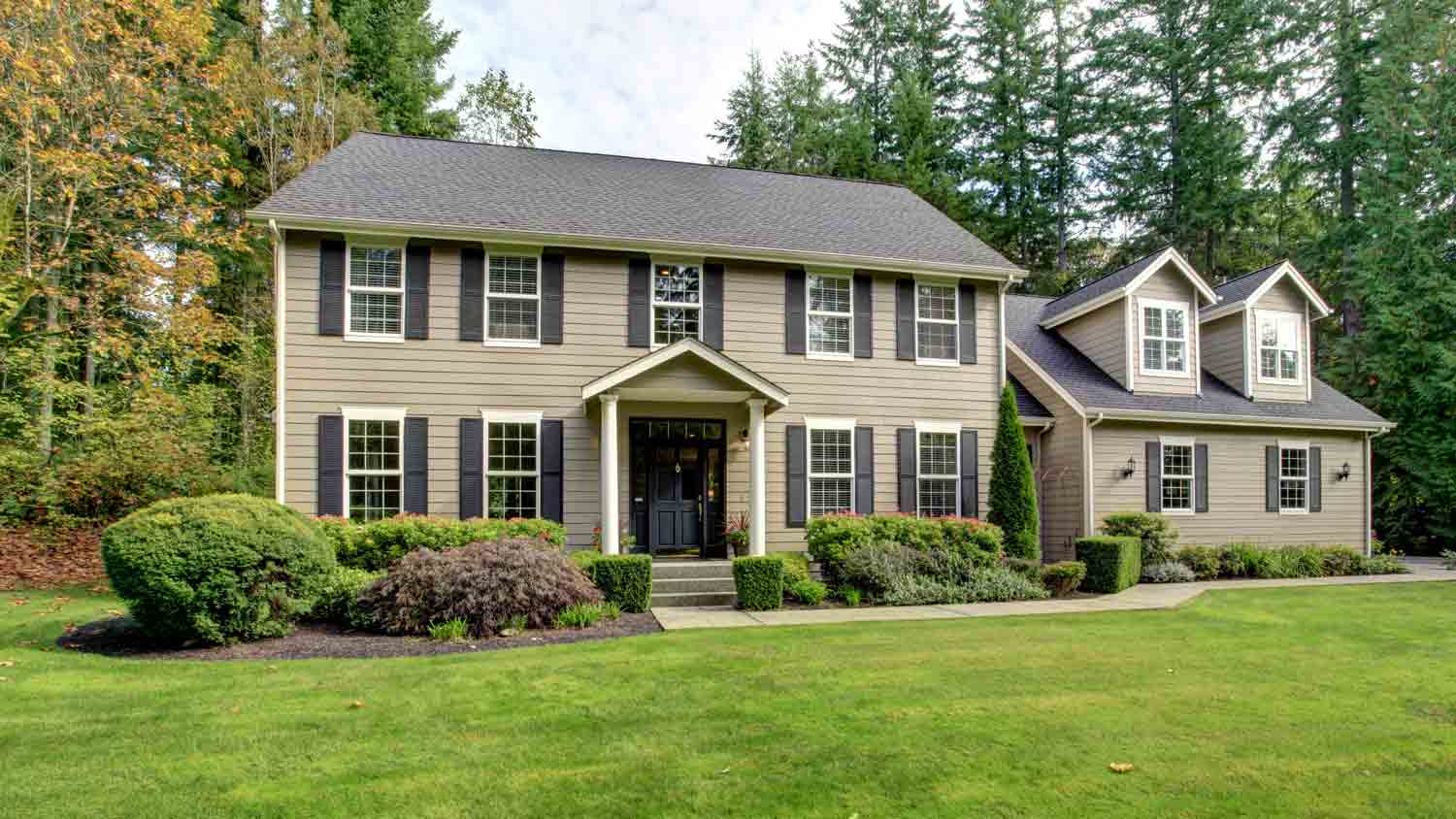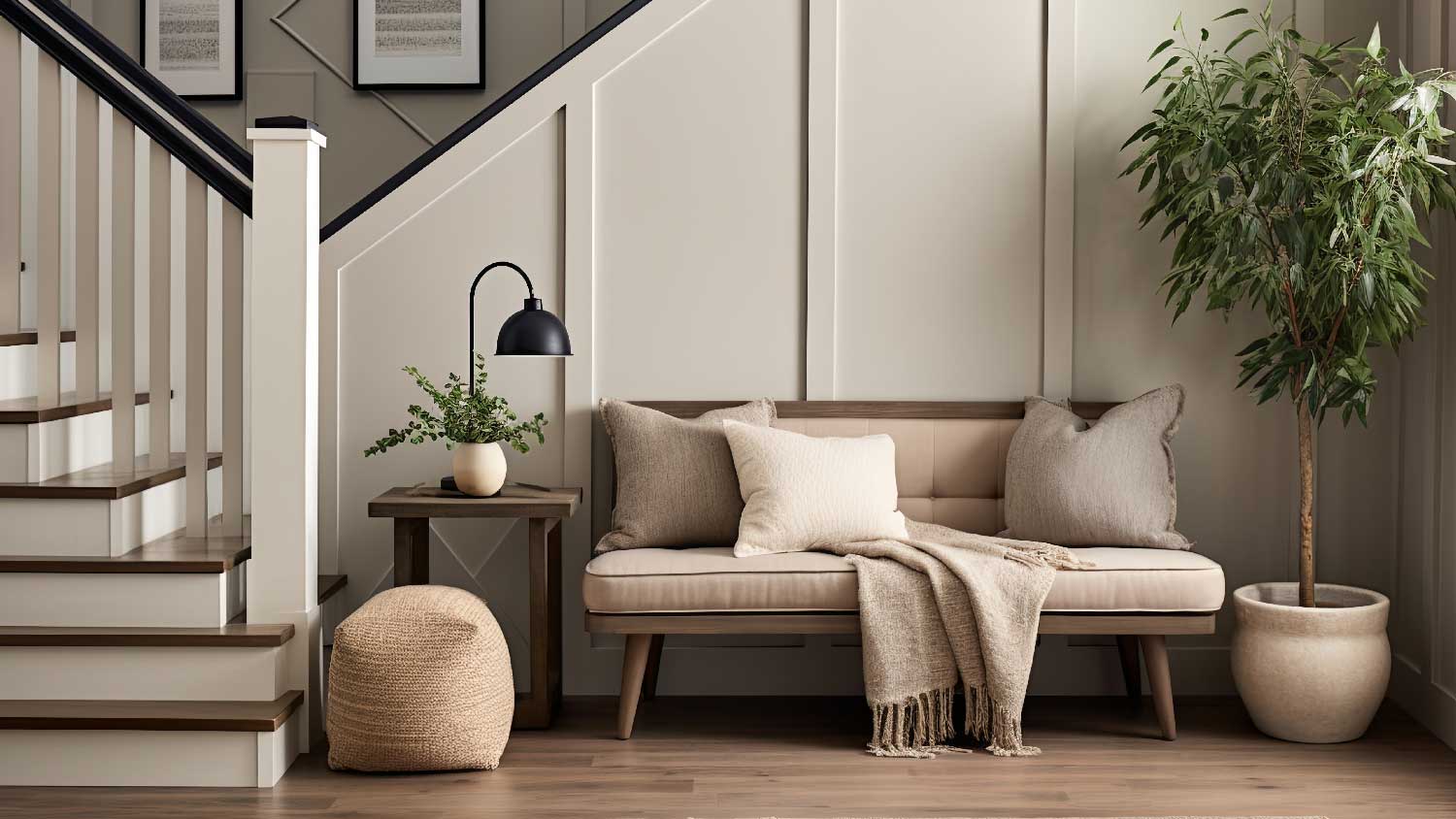
The cost of siding repair varies depending on material, design, and damage. This helpful guide covers the siding repair costs to expect in Columbus, Ohio.
Rain, rain go away—with the help of a trusty screen, that is


Rainscreens manage moisture by allowing for drainage and airflow
They protect your home from UV degradation
Composed of cladding, a cavity, and an air-vapor barrier
If you want to protect your home from the elements—like snow, ice, rain, and harmful UV light—you may want to invest in a rainscreen. Rainscreens keep its structural facade as dry as possible by allowing for drainage and evaporation. Here’s everything you need to know about these handy systems.
A rainscreen is a system that protects a structural wall from nature’s elements, thereby increasing the wall’s drying capacity. It creates a gap between the siding and a water-resistive barrier. Because a rainscreen acts as a shield against snow, rain, and ice, it reduces the chance of water finding its way into your wall (and causing mold, rot, or other damage) and helps effectively manage any moisture by allowing for good drainage and airflow. Rainscreens typically feature outer cladding, a cavity, and an air and vapor barrier.

A rainscreen is made up of three main parts: cladding, a ventilation cavity, and an air and vapor barrier.
Cladding is a material used to cover a structure’s exterior. With a rainscreen system, this is the primary feature that protects the wall assembly from water. It also protects against other weather and provides shading and ultraviolet protection. Cladding can be made from metal sheeting like copper, zinc, stainless steel, or aluminum.
A rainscreen isn’t effective without a ventilation cavity. The cavity allows for optimal airflow and drainage of any water that penetrates the cladding.
In addition to deflecting rain and other elements, rainscreens protect against harmful UV light. The air and vapor barrier is essentially the last line of defense against any residual amounts of water, as well as UV light, which can lead to eventual degradation.
Before you begin the installation process, here are some important things to consider:
Use cladding that’s compatible with your rainscreen
Flashing should extend behind the water-resistant barrier
If you live in a fire-prone region of the country, you should check with your code official before installing a rainscreen; a thicker rainscreen gap may be restricted
Not recommended for vinyl siding—standard vinyl siding basically already contains its own water management feature
There are several benefits to installing a rainscreen:
Enhanced water management
Protects structural wall from UV degradation
Relatively easy to install, maintain, and replace
Of course, a rainscreen may not be the right choice for every homeowner. Here are a couple of drawbacks to consider:
You have to be diligent about inspecting the sealing joints and flashing components of your rainscreen after a storm—if you fail to do so, your screen may not operate correctly.
If you live in an arid climate, a rainscreen might not be worth the effort or additional cost since you don’t need the extra moisture protection.
According to HomeAdvisor, rainscreen installation generally costs 50% more than traditional lap siding styles like shiplap and clapboard. This is because rainscreen siding uses a complex layout. Contact a siding installation professional in your area for an exact quote.
From average costs to expert advice, get all the answers you need to get your job done.

The cost of siding repair varies depending on material, design, and damage. This helpful guide covers the siding repair costs to expect in Columbus, Ohio.

Fiber cement siding is durable, fire-resistant, and affordable. Learn more about fiber cement installation costs in Columbus, OH.

In addition to protecting against extreme Midwest temperatures, new siding in Columbus adds curb appeal. Learn about siding replacement cost in Columbus.

Knowing what kind of siding you have will help you with maintenance, repairs, and replacement. Learn how to tell what type of siding you have.

In this guide, we break down the strengths and weaknesses of the two most popular materials for home exteriors to help you choose the best one for your needs.

Wondering how to calculate board and batten spacing? Use this calculator to help. Pay attention to the order in which you complete the calculations.